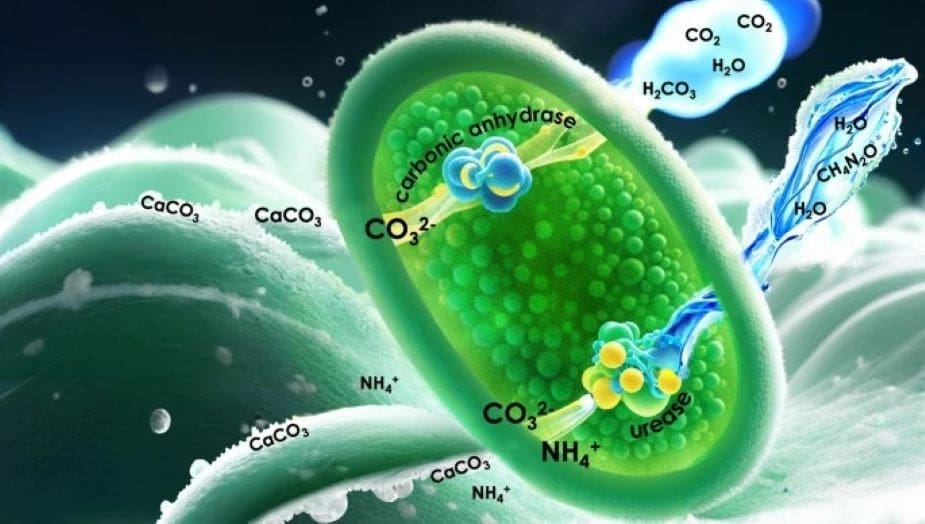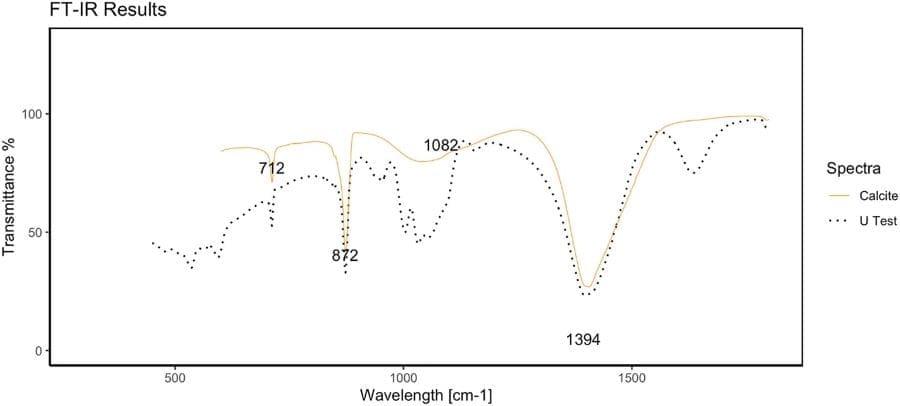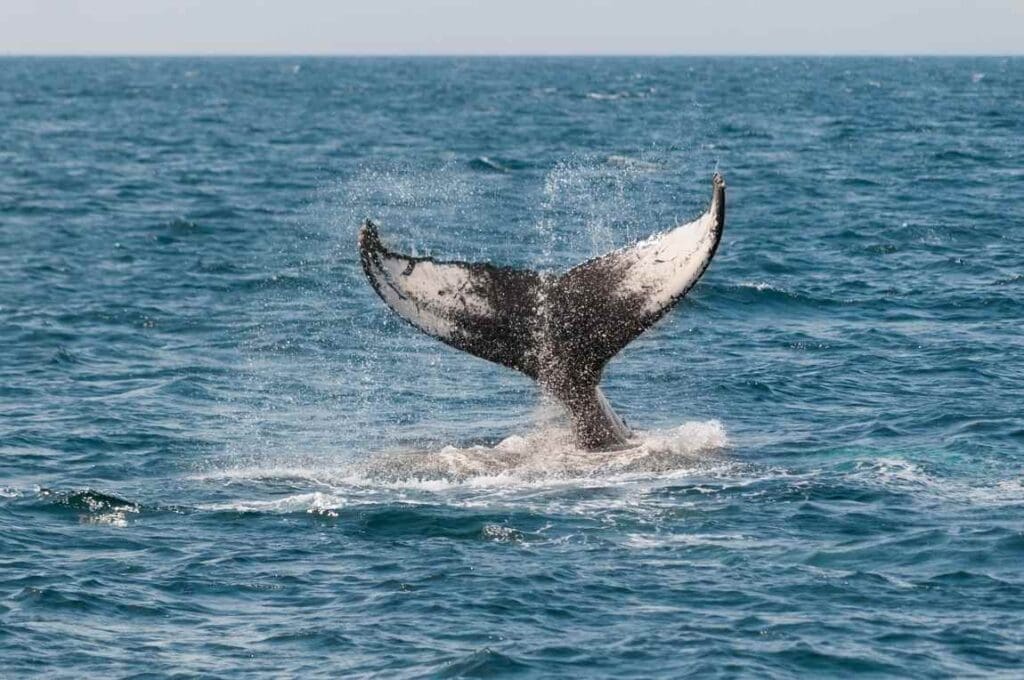Summary:
A soil-dwelling microbe with remarkable biochemical versatility has demonstrated the ability to transform carbon dioxide directly into stone, offering new possibilities for low-emission construction materials. In a study published in Scientific Reports, researchers from EPFL, the University of Applied Sciences and Arts of Southern Switzerland (SUPSI), and the EPFL start-up Medusoil SA investigated Bacillus megaterium, a microorganism commonly found in soil, freshwater, and marine environments. What makes this species stand out is its dual enzymatic ability to induce calcite formation either through ureolysis or via carbonic anhydrase activity – depending on environmental conditions.
At extremely high CO2 concentrations – over 470 times atmospheric levels – B. megaterium activates its carbonic anhydrase pathway to catalyze the transformation of CO2 into bicarbonate, which then reacts with calcium to form calcite. By using C13-labelled urea, the team showed that 94% of the resulting calcium carbonate was derived directly from CO2, not nitrogen-based compounds. This makes the process not only effective but cleaner than traditional ureolytic methods, which produce unwanted ammonia as a byproduct.
The research highlights a potential bio-based solution to industrial carbon emissions, especially in construction. “The potential that lies ahead is huge,” said Dimitrios Terzis, co-author and co-founder of Medusoil. “We can’t wait to upscale and maximize it.”

The multitasking microbe that turns naturally CO₂ into minerals
In the future, could the walls of our houses be partly made from CO2? Researchers from EPFL’s Soils Mechanics Laboratory, the University of Applied Sciences and Arts of Southern Switzerland (SUPSI) and the EPFL start-up Medusoil SA have demonstrated that Bacillus megaterium – a resilient and versatile microorganism commonly found in soil, freshwater and marine environments or even plant surfaces – can mineralize carbon dioxide (CO2) into calcium carbonate (CaCO3), the mineral that forms limestone and marble.
What sets this study apart is not just the biological feat itself, but the quality and origin of the mineral formed. Under high-CO2 conditions – specifically, at concentrations over 470 times those found in the atmosphere – B. megaterium shifted its metabolic strategy. Using an enzyme called carbonic anhydrase, it converted CO2 into bicarbonate, which then reacted with calcium ions to form solid calcite. Astonishingly, 94% of the resulting mineral was derived directly from CO2, not from nitrogen-based compounds like urea.
A clean route to solid mineral
“We know that dozens of bacteria have the potential to mineralize crystals,” says Dimitrios Terzis, corresponding author, Research and Teaching associate at EPFL’s Soil Mechanics Laboratory and co-founder of Medusoil SA. “However, what is unique about our work is that we showcase this can be done by directly using CO2. The potential that lies ahead is huge, and our teams can’t wait to upscale and maximize it.”

This biological duality is rare. B. megaterium possesses two metabolic pathways to induce mineral formation: ureolysis, which depends on nitrogen compounds, and carbonic anhydrase activity, which uses CO2 directly. While the former has long been studied in the context of microbially induced calcite precipitation (MICP), it produces unwanted byproducts such as ammonia. The latter, by contrast, offers a cleaner route – capturing CO2 and converting it into solid mineral without toxic residues.
“This study shows how environmental microbiology, when combined with advanced laboratory techniques, can reveal mechanisms that would otherwise remain hidden,” says Pamela Principi, researcher at SUPSI. “The use of C13-labelled urea was key to tracing the origin of the carbon in the mineral, allowing us to quantify the microbial pathways with precision. It’s a great example of how multidisciplinary approaches – bridging microbiology, geochemistry, and materials science – can lead to impactful discoveries”.
Small microbes, big potential
As conversations about climate action shift from carbon offsetting to emission prevention at the source, this research points to a new path forward – especially for industries like construction and materials manufacturing, which are among the largest direct emitters of greenhouse gases. By embedding carbon into mineral form, this microbe opens the door to bio-based, carbon-sequestering binders, and even conservation-grade materials for building and monument restoration.
This natural mechanism offers a tangible way to harness biology for climate-positive outcomes such as capturing CO2 at emission points, stabilizing soils or enhancing the durability of infrastructure. “Medusoil has the know-how to operate bioreactors and scale up microbial production with field-ready solutions,” says Dimitrios Terzis. “This study shows that despite challenges like the high concentration of CO2 needed and the fact we have to vary its purity levels, critical parameters can be effectively controlled using conventional biotechnology. We’re confident we can tune our recipes and growth conditions to bring B. megaterium to industrial deployment.”
Journal Reference:
Cappa, M., Perego, C., Terzis, D. et al., ‘Bacillus megaterium favours CO₂ mineralization into CaCO₃ over the ureolytic pathway’, Scientific Reports 15, 21861 (2025). DOI: 10.1038/s41598-025-07323-9
Article Source:
Press Release/Material by Dimitrios Terzis and Julie Haffner | EPFL
Featured image credit: Cappa et al. (2025) | Scientific Reports | CC BY



